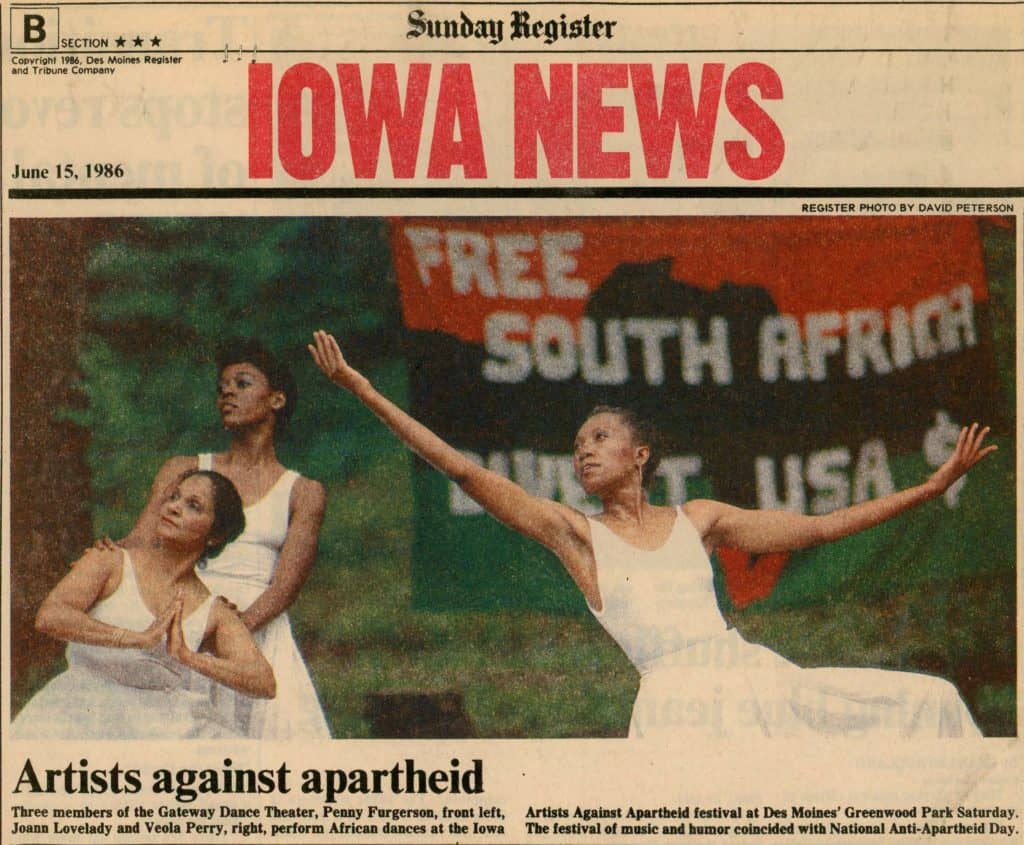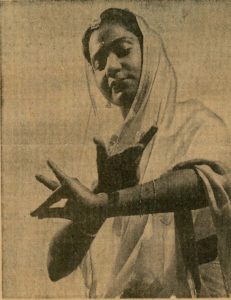This piece was written by IWA Student Assistant Kelly Kemp.
In 1977, Joan Bunke, film critic and book and arts editor at the Des Moines Register, attended a Gateway Dance Theatre performance. She disliked what she saw, and published a column in the paper criticizing the “ruination of line” and “lack of body discipline” displayed by the dancers. A few weeks later, prominent Des Moines, Iowa, civil rights activist, Edna Griffin, published a strongly worded response to Bunke’s criticisms. Griffin suggested that the Gateway Dance Theatre shattered Bunke’s “too-narrow view of dance as an art form,” a view which Griffin described as “limited exclusively to ballet and the western world.”
This exchange begs the question: why would a dance theatre inspire such a response from a civil rights activist?
To understand the Gateway Dance Theatre, it’s important to know about its founder, Penny Furgerson, whose papers are now available in the Iowa Women’s Archives. Furgerson was born Penny Rosemary Thomas in 1936 in Karachi, Pakistan. She attended school in Bombay, India. Furgerson had interest in both the sciences and the arts. She was trained in South Indian classical dance (Bharatanatyam) from an early age, and she graduated from the University of Bombay with honors in chemistry. She then moved to Des Moines, Iowa, where she received a full tuition scholarship to study pharmacy at Drake University. While in Des Moines, she met Lee B. Furgerson, Jr., and they would go on to marry in 1961 and raise three sons. About 10 years later, the couple founded the Gateway Dance Theatre.
Lee Furgerson’s family was locally prominent in Des Moines, known for their activism and community involvement. Three of his four sisters’ papers are held at the Iowa Women’s Archives: the Betty Jean Furgerson papers (IWA0111), the Lileah Harris papers (IWA0256), and the Martha Nash papers (IWA0235).
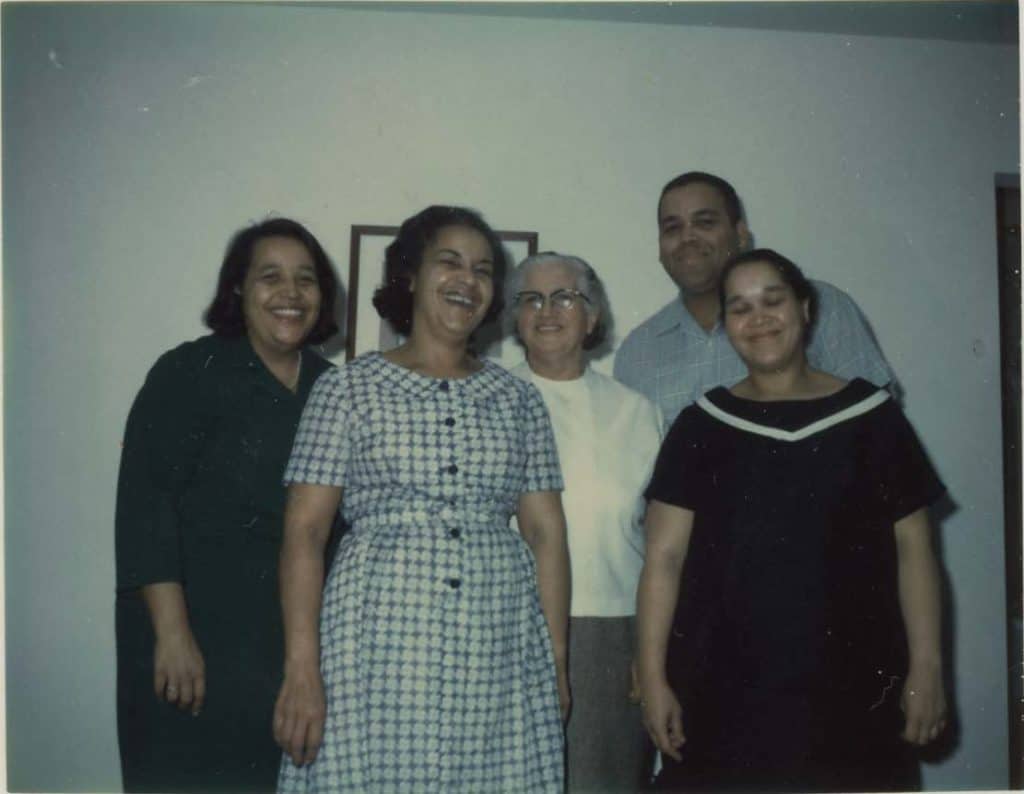
In an article in the New Iowa Bystander, a newspaper by and for Black Iowans, Furgerson explained what inspired and prompted her to begin her own dance theatre. In 1971, she attended a performance put on by the Dance Theatre of Harlem. She recounted this experience and how it shocked her. She realized that there was a gap in the dance opportunities for the Des Moines community, and an almost complete lack of accessible, non-western, multi-ethnic dance opportunities. The Gateway Dance Theatre would offer a positive, creative outlet for disadvantaged, high risk community groups. In news articles from the early 1970s, Furgerson describes how formal training is not a prerequisite for her dancers, and that there are not fees for attending her classes. She emphasizes that all are welcome, and no individual’s talent is turned away based on economic status. In an application for a Community Development Block Grant, Furgerson states, “The Gateway Dance Theatre… provides the City of Des Moines with cultural entertainment for the community at large, purposeful activity for youth in targeted areas, and elevates the self-esteem of the minority communities involved by giving them positive visibility.”
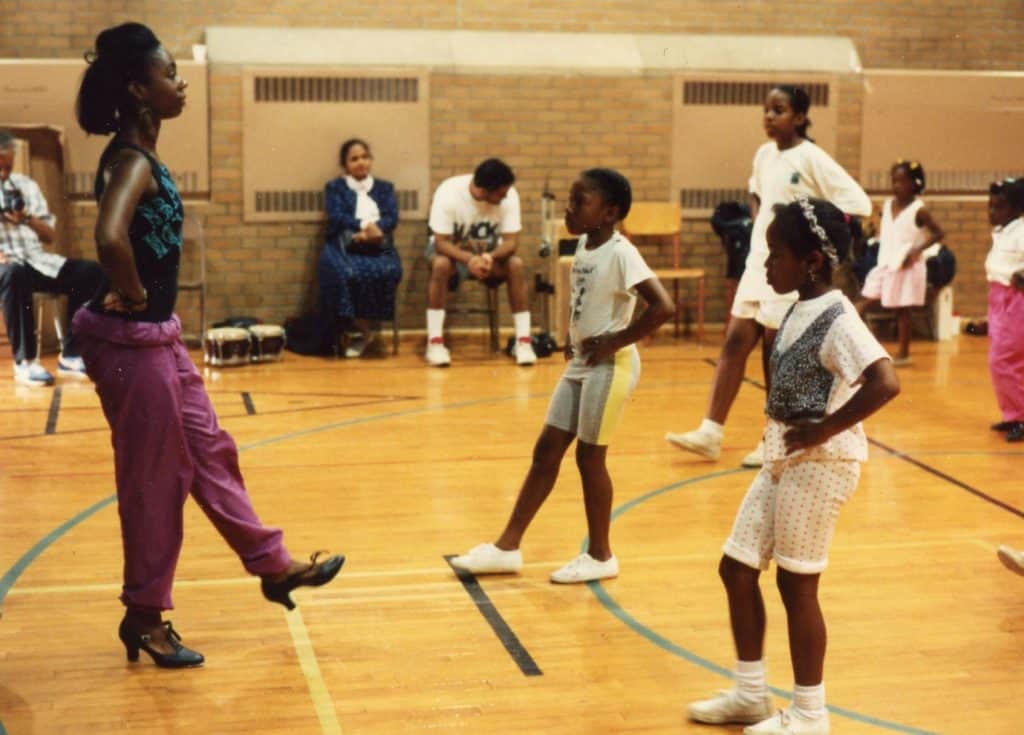
For many years, there were few other options for multiethnic dance opportunities in Iowa. One of these options was the Dieman-Bennett Dance Theatre of the Hemispheres in Cedar Rapids. This dance theatre was co-founded by Edna Dieman and Julia Bennett in 1951. Dieman was born and raised in Iowa, and Bennett was born in Chittagong, India, to English parents. The Dieman-Bennett Dance Theatre of the Hemispheres provided instruction (at a cost) and performances that reflected many cultural influences. The Dance Theatre of the Hemispheres closed its doors in 1997, and its papers are also held at the Iowa Women’s Archives (IWA0265).
In the past 52 years, the Gateway Dance Theatre has gone above and beyond in fulfilling the mission and goals set in 1972. In the Penny Furgerson papers, the positive impact of the Gateway Dance Theatre is clearly evident in photos of the smiling faces of those attending workshops, and in the thank-you notes handwritten by elementary school students who attended classes. Furgerson brought the opportunity for a positive creative outlet to all members of the community, breaking down barriers to access.
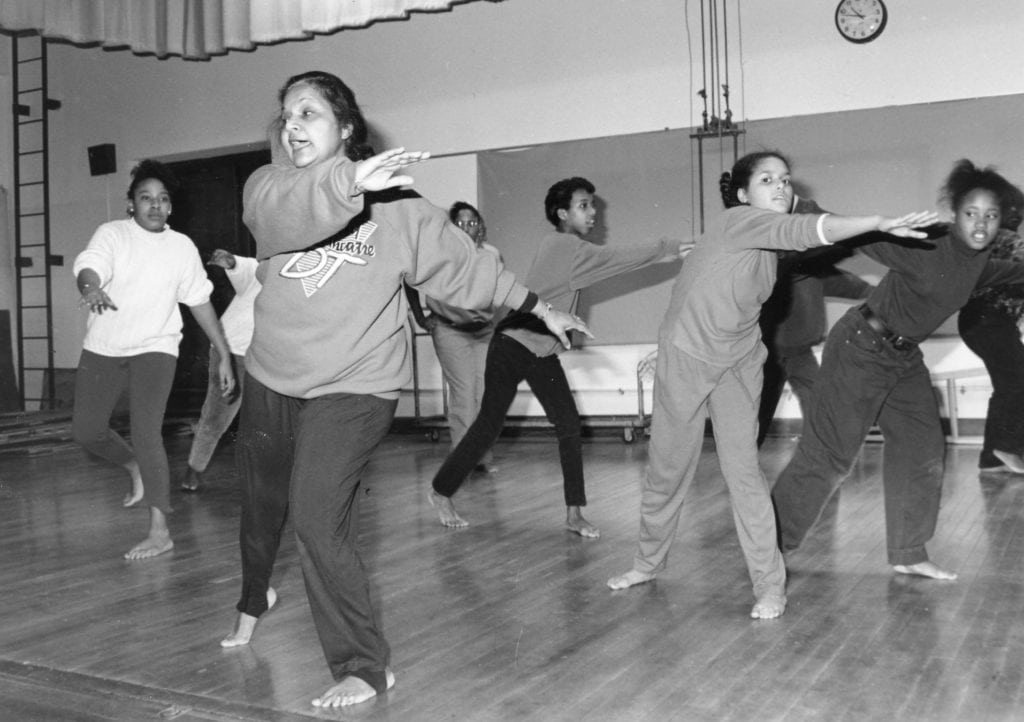
The work done by Furgerson has been remarkable, and has not gone unappreciated by the community. To return to Griffin’s column written five years after Gateway was founded, the Des Moines civil rights activist says, “The Gateway Dance Theatre represents part of a national effort to bring the arts closer to the people as well as providing opportunities for participation. The process is known as a cultural enrichment… Many people in our city take pride in and concern for Gateway—a small miracle in our midst.” The Gateway Dance Theatre has been an integral part of Des Moines’ arts and culture for more than 50 years, consistently offering opportunities without barriers to community members of all backgrounds, ages, and socioeconomic statuses.
